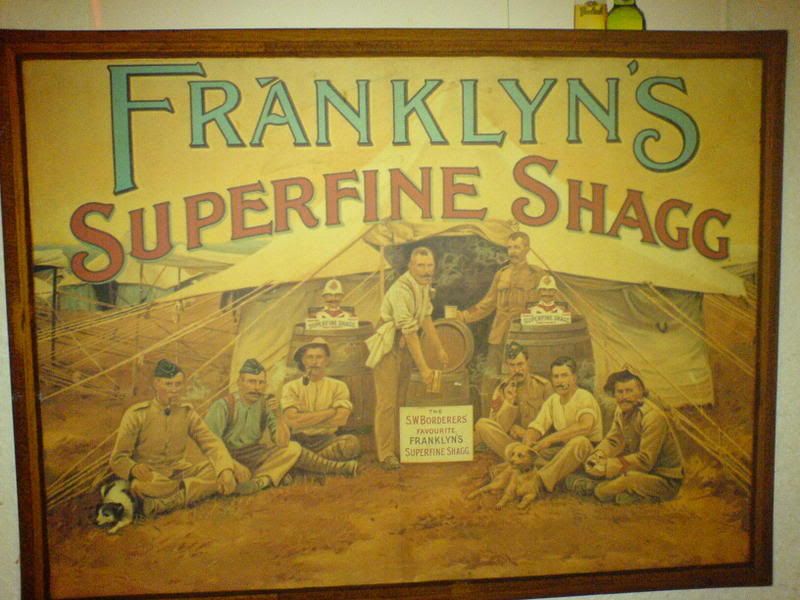The affects of Cotton and disposable nappies to healthI have been investigating real nappies for a project at work. It wasn't a subject particularly close to my heart, but I grew to understand how it can turn into a crusade for interested parties.
The best source of information, if you interested in finding out more or wish to talk about related topics, is the
women's environmental network.
Introduction:There are benefits to using both disposable nappies and real nappies, although the vote on the basis of environmental benefits is out (or so you would think; the results of this Environment Agency Report were surprisingly critical and have caused a wee furore:
Click here for the contreversial EA report on the Environmental Considerations) there is still a lack of evidence to support the claims of the
Real Nappy camp, and most disposable manufacturers do not reveal the contents of their nappies, for obvious reasons.
Cotton nappies are simple, studies have shown them to be financially beneficial, and they are of benefit to the environment. They are basically a terry towelling fabric made from cotton, with dispoable liners to collect solids in and often a pretty multi-coloured outer layer.
Cotton nappies are more likely to keep the infants skin in contact with the ammonia which can be formed by a combination of faeces and urine. This is the most common cause of nappy rash. The argument for Cotton Nappies is that parents are aware of their child’s discomfort with cotton nappies and therefore change the nappy more frequently. Studies on infants in their first four weeks tended to show that cotton nappies were better for the infant.
The second most common reason given for using cotton nappies (in a survey of 15% of the parenting population of Buckinghamshire carried out by their Council) was for the health of the child. The primary reason given was for environmental concern.
Click here for full reportDisposable Nappies are convenient and easily available in a number of styles to suit the changing needs of babies as they grow. They usually contain absorbent materials to keep the baby dry.
Little research has been done into the chemicals used in disposable nappies, and manufacturers are under no obligation to list what is used, although some of the known common constituents are outlined in this report.
Disposable Nappies:Modern disposable nappies are constantly being re-invented, with cotton-soft and ever more breathable nappies being added to companies’ ranges.
Disposable nappies are based on two main materials; cellulose fibres and polymers. The core is composed of fluff pulp and sodium polyacrylate (super absorbent polymer or SAP), which is a water absorbing polymer. The function of the core is to absorb and contain liquid excreta. The top layer, referred to as ‘non-woven’, is a polymer-based material with a textile structure. From the top layer, the fluids flow through a pulp-based tissue layer down to the core. They can contain up to 200 chemicals depending on the manufacturer.
Disposable Nappies work by absorbing the liquids from urine and faeces away from the baby.
Areas of concern include the constituents of absorbent gels in disposables, raised scrotal temperatures, the contamination of plastics with TBT (tributyl tin), chlorine bleaching of the wood pulp used in nappies and possible respiratory implications.
SAPs are supposed to be non-toxic and have been approved by the American Food and Drug Administration. However, there is a distinct lack of research into the effects of extreme dryness on babies' thin skin and genitalia. Warrington Borough Council proposed that this dryness was counter-productive as parents would become accustomed knowing when their child had soiled their nappy and be more easily able to identify if they are dehydrated.
Super-absorbent gels can include sodium polyacrylate crystals which forms a gel when in contact with urine. There are particular concerns about these super-absorbent chemicals entering the body via broken skin, especially as sodium polyacrylate and other chemicals designed to increase absorbency have had to be removed from tampons as they were associated with the development of Toxic Shock Syndrome.
Research has also shown that disposable nappies keep babies' testicles at higher than normal temperatures. This has raised concern over whether this could pose a risk to their future fertility, as research shows brief elevations of testicular temperature can suppress spermatogenesis and sustained elevation of temperature may contribute to testicular pathology in cryptorchidism, varicocele and occupational male infertility. I t should be noted that, despite speculation, there is presently no evidence to state that an increase in scrotal temperature of 1.5 to 2 degrees causes long-term damage in infants.
TBT or tributyl tin is a toxic chemical, it can contaminate certain types of plastic during manufacture. Recently commissioned research has shown significant levels of TBT in many brands of disposable nappy. Babies may be in contact with up to 3.6 times the World Health Organisation's estimated tolerable daily intake. TBT is a recognised environmental pollutant and is also used as a constituent of ship paint. It is known to disrupt the immune and hormonal systems of marine shellfish and there are plans to phase out its use worldwide.
Chlorine bleaching is used much less than previously in the bleaching of wood pulp for white paper products. Chlorine bleaching creates toxic dioxins, dioxins are considered to be extremely toxic, so much so that there is debate over whether safe levels actually exist. There is presently no legislation requiring manufactures to print the nappy materials or processing details on their packaging.
An independent study done in 1999 has shown that the airborne emissions of some disposable nappies can produce acute respiratory toxicity, including asthma like reactions, in normal laboratory mice. The researchers suggest that further study is required into a possible link between disposable nappies and the increasing prevalence of childhood asthma (Anderson, Rosalind, and Julius Anderson. "
Acute Respiratory Effects of Diaper Emissions." Archives of Environmental Health, 54, October 1999).
A potentially serious problem associated with disposable nappies is the ease of disease transmission via faeces left on the nappy and then disposed of in regular household waste. More than 100 enteric viruses are excreted in human faeces, including hepatitis and polio (if the live vaccine is used for immunisation) Viruses can live for months creating risks to both sanitation workers and contamination of ground water in landfills.
Re-usable NappiesRe-usable nappies are generally made from terry-towelling, a cotton-based material. They often come with a separate or built-in waterproof covering and additional liners made of fleece or silk.
Almost all parents who use re-usable nappies also use disposable nappies, as they are broadly considered to be the more convenient option.
The fit and padding of most cotton nappies promotes correct hip development and they are often recommended for babies with ‘clicky hips’. Most will also give additional protection and padding for the lower spine, which can help with falls when toddlers are learning to walk.
As cotton nappies are re-used and do not contain bacteria-killing chemicals the risk of them carrying infection is greater. However, many companies offer cotton nappy collection and laundry to a hospital standard.
Commercial laundering of nappies, although successful in cleaning the nappies, may also use bleach and therefore be as hazardous as disposable nappies in this respect.
The Environment Agency study, Life Cycle Assessment of Disposable and Reusable Nappies in the UK concluded
there was no significant difference between any of the environmental impacts –
that is, overall no system clearly had a better or worse environmental
performance, although the life cycle stages that are the main source for these
impacts are different for each system.
Additional information:There are a number of causes of Nappy Rash, the most common of which is prolonged dampness; however diet has also been proved to be a considerable factor in the degree to which contact with urine and faeces irritates the skin.
The type of nappy used is not a significant factor in the incidence of nappy rash. Research carried out by
The Avon Longitudinal Study of Parents and Children (ALSPAC) also known as 'Children of the 90s' has shown that infants in their first four weeks are given little protection from Nappy Rash by Disposable Nappies.
This finding helped to endorse a hospital scheme arising from environmental concerns that encourage parents to use cotton nappies instead of disposables.
The most important factor in avoiding nappy rash is keeping the baby clean. Dirty nappies should be changed immediately and wet ones regularly, and bottoms washed at each change.
Cotton Nappies do not have chemicals to treat the faeces and urine immediately in them, however, babies in cotton nappies are also more likely to make a parent aware that their nappy is oiled more often.
Fresh air is important too; babies should be allowed to ‘go bare’ as much as possible. Prolonged skin contact with soiled nappies causes nappy rash. Germs from the bowel have time to break down the urine and release ammonia, thus inflaming the skin. Nappy rash may also be a symptom of teething, or a reaction to new food that the baby's digestive system isn't ready for. However, studies into the causes of ‘severe nappy rash’ have been inconclusive and it is not known what effect the type of nappy used has in these cases.
The National Eczema Society says, “Cotton clothing and bedding keep the skin cool and allow it to breathe, whereas synthetic fabrics and wool can irritate.” This is worth considering given the increasing cases of Atopic (infantile) Eczema in tandem with asthma (which is, in turn, more prevalent in inner city areas).
It is important that the skin is not kept too dry where eczema is present and disposable nappies function by keeping the area dry. Despite personal testimonies to the contrary, a study of infants with eczema using different fabrics discovered no discernable difference between the fabrics (Diepgen TL, Stabler A, Tepe A, Hornsein OP. A study of skin irritation by textiles under standardised sweating conditions in patient with atopic eczema.[German] Z Hautkrankheiten. 1990;65:907-910)




